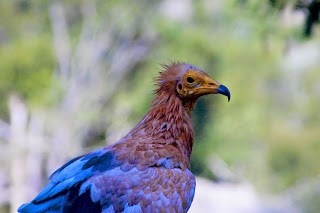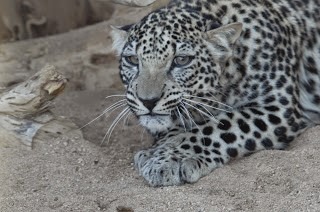This is a personal dialogue between Emmy Award writer/producer and author of The Hydrogen Age, Geoffrey Holland, and Michael Charles Tobias, PhD, one of the world’s most influential ecologists. He is a prolific author, filmmaker, and lecturer. In a career to date spanning 45 years, and as President of Dancing Star Foundation for 16 of those years, Tobias’ work has taken him to nearly 100 countries, where his field research has resulted in some 50 books and 150 films that have been read or viewed throughout the world. He was the 62nd recipient of the Courage of Conscience Award, and is an honorary Member of the Club of Budapest. Tobias is best known for such works as his massive tome, World War III: Population and the Biosphere at the End of the Millennium, and with his partner Jane Gray Morrison, the ten hour dramatic mini-series, Voice of the Planet.
__________________________
Geoffrey Holland – When I was born, there were about 2.5 billion humans on Earth. In just over six decades, that number has tripled to nearly 7.3 billion. Humans have always been a rapacious species, using the planet’s resources as if without consequence. Up until the late 20th century, we pretty much got away with it, because the Earth’s bounty was so vast. It’s clear now that our indiscriminate hubris has caught up with us. The sheer weight of humanity is driving unprecedented levels of ocean depletion, deforestation, the loss of critical top soils, the squandering of fresh water resources, the dangerous warming of our atmosphere, and perhaps most significant, the devastating loss of biodiversity. In the face of all this, the response of our political leaders has been tepid at best. There do seem to be some encouraging signs, with humanity beginning to give some attention to the reckless course we’ve set for ourselves. What is your assessment of the prospects for human civilization, given our deeply destructive life choices?
Michael Tobias – Good question, not easily answered. Homo sapiens has never been at such a crossroad, where in we are responsible for the future of life on Earth. It is a catastrophic position to be in, unless, presumably, you are God. Barring any God-like interventions, we are left with a chilling predicament that indicts our nearly every activity.
For example, seize the news from any single morning, and you come up with such statistics as follows, today, May 6, 2015. You have a senior biologist, Dr. Haakon Hop, with an expedition called the Norwegian Young Sea ICE: Cruise, who – as reported by science editor David Shukam for the BBC News – declares , “So, what has been around the Arctic is these animals that live underneath the ice – crustaceans, amphipods, and copepods – the biodiversity has gone down, and their abundance and biomass have also gone down in the areas that have been measured” (“Climate Drives ‘New Era’ in Arctic Ocean.”). This expedition has noted a terrifying truth about the rapidity of Arctic sea ice melt, and the impacts upon every ecosystem there. Moreover, other BBC news this morning suggest findings from the Antarctic citing that when the Arctic weather changes, ice core samples now unambiguously show that within 200 year the Antarctic begins to melt rapidly. The trouble is these trends are not happening 200 years apart, as was the case for many millennia. They are happening simultaneously, as the oceanic currents in both the northern and southern hemisphere warm up at the same time. Every country is feeling the wrath and blow-back of our collective emissions.
Then, there is the grim headline in today’s Los Angeles Times, “Millions of ‘Red Trees’ – National forests across California are turning brown from lack of water, raising concerns about wildfires,” by Veronica Rocha and Hailey Branson-Ports (pp, B1, B5) pertaining to the fact that “Instead of the typical deep green color, large swaths of pine trees now don hues of death, their dehydrated needles turning brown and burnt-red because of the state of worsening drought.” “The situation is incendiary,” William Palzert of JPL (California Institute of Technology’s NASA Jet Propulsion Laboratory) is quoted. “The national forest is stressed out.”
And on the very cover, today’s L.A. Times is writ front and center and bold, “A STATE OF DENIAL – Data suggest the need to slash water use hasn’t sunk in,” by Monte Morin, Matt Stevens, and Chris Megerian (pp: A1, A11).
Also on the cover of today’s L.A.Times, Chris Kraul’s piece entitled “Chile’s Race to Save its Mummies,” (pp A1, A4). Because of climate change, the oldest mummies in the world are melting, turning into a mysterious black ooze.
Again, in the same L.A. Times, today. Pat Morrison speaks with Stanford University professor, Jon A. Krosnick about his two decades of looking at public opinion regarding climate change. Krosnick speaks to the fact that “…we’ve started looking at states and haven’t found a single state where a majority of residents are skeptical, but legislators think they are.” (p.A.15)

It’s called, of course, the Anthropocene. We’ve known about it for decades, despite huge biological gap analyses. We’re losing species at a rate that goes well beyond our comprehension. Out of the possible 100 million or so species, if one includes all lifeforms, we may well be losing thousands of species every day. More than half of all life is headed toward extinction – we know that, particularly all large vertebrates (those animals over 100 kilograms) are threatened. Herbivores like mountain gorillas and rhinos, elephants, giraffes, are particularly in trouble. But so are all charismatic carnivores, like tigers, wolves and grizzly bears. Among reptiles and amphibians, and the parrot groups of birds, the crisis is overwhelming. And this doesn’t begin to factor in overall loss of habitat, key nurseries of the planet, like the neo-tropics and coral reefs.But, then people, even serious students of the environment, read a piece like that by Jason G. Goldman, writing in the May 1st, 2015 issue of Conservation, in an article entitled “National Park Visitors Inject billions into the US Economy,” and they see that there were “292 million” visits to America’s 401 national parks in 2014, generating income exceeding “$16 billion” in park gateway regions (not even including money spent inside the parks) and creating cumulatively, as of 2014, 277,000 jobs.” And the temptation is to feel better about things, almost as if to nullify in one’s mind the truth of what is happening all around us.

Nor does it touch upon the most enormous area of all in which human cruelty is meted out in lethal forms to animals used for food, leather, fur, and a number of other material goods (a very dubious phrase: indeed, ‘material goods’ since there is nothing good about dead animal hides, or palm oil, whose origins coincided with the human destruction of tropical peat swamps and the orangutans, for example, that depend solely on such habitat for their waning survival).
Some three trillion animals killed last year, including cows, chickens, fish, turkeys, dogs, horses, pigs, sheep, and so on, for human consumption.
We are in a colossal mess like never before. So, my “assessment for the prospects of human civilization” as you ask? Not good…. Read more.
The views and opinions expressed through the MAHB Website are those of the contributing authors and do not necessarily reflect an official position of the MAHB. The MAHB aims to share a range of perspectives and welcomes the discussions that they prompt.